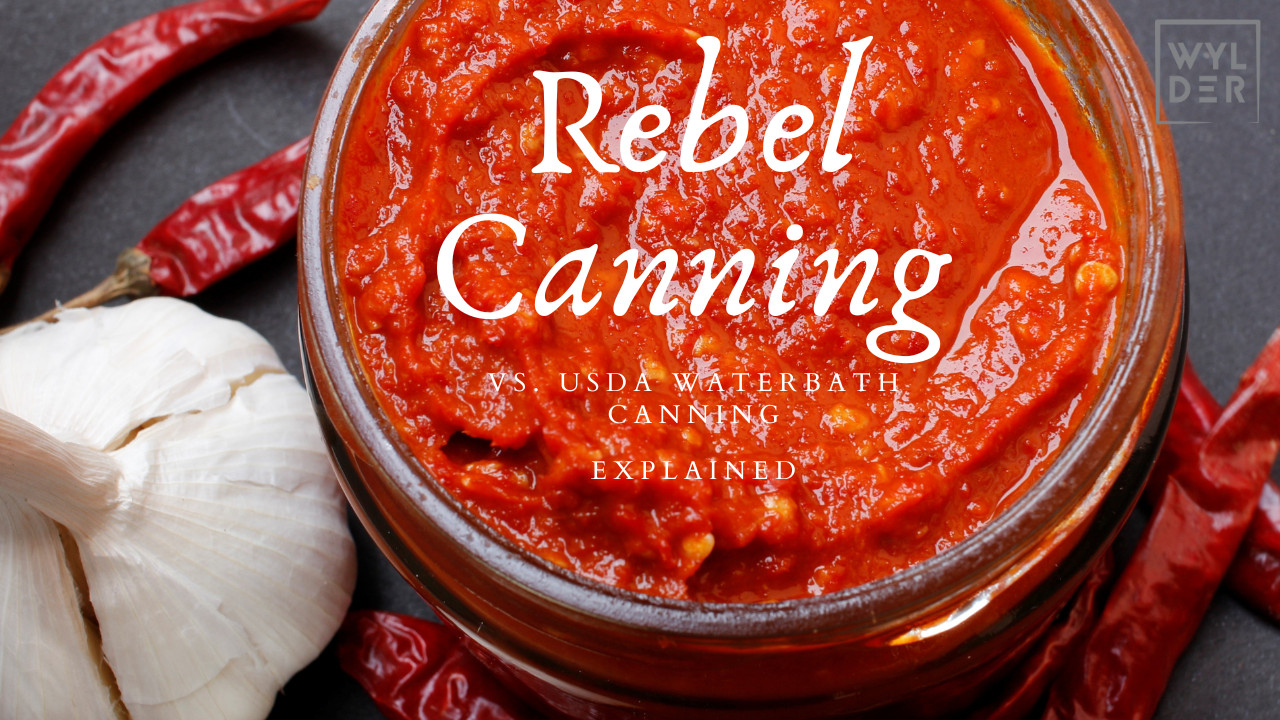
Canning is an excellent method for preserving food, but the approach you take can significantly affect safety and outcomes. If you're diving into the world of canning, you've likely come across two camps: "Rebel Canning" and the USDA-approved waterbath method. Here's a closer look at the differences and why it's essential to understand both—especially if you want to preserve food while staying safe.
What is USDA Waterbath Canning?
The USDA method is considered the gold standard for canning high-acid foods, such as fruits, tomatoes, and pickles. The process involves placing filled jars in a boiling water bath to create a vacuum seal, killing harmful bacteria like molds and yeasts. This method is particularly effective for acidic foods but requires strict adherence to guidelines regarding temperature, processing times, and acidity to ensure safety. The primary goal is to prevent the risk of botulism, a potentially fatal illness caused by improperly canned low-acid foods.
What is Rebel Canning?
Rebel canning refers to home canning methods that veer away from USDA recommendations. Often practiced by individuals who prefer to follow older, traditional methods, rebel canning may include using waterbath canning for low-acid foods like vegetables or meats—something the USDA deems unsafe without pressure canning. Many who practice rebel canning trust in generational knowledge, sanitization practices, and their instincts rather than government-issued safety guidelines. However, this method carries higher risks because it bypasses scientifically validated processes designed to eliminate harmful bacteria.
Why the Difference Matters
While rebel canners emphasize freedom and tradition, it's important to understand the risks involved. The USDA guidelines were established after decades of research and numerous cases of foodborne illnesses. The waterbath method is only effective for high-acid foods, while low-acid foods require pressure canning to ensure all harmful microorganisms are destroyed. Following USDA guidelines helps ensure that your preserved foods are safe to eat, reducing the risk of botulism.
Learn More with Nourishing Traditions
If you're passionate about preserving food the right way—whether through canning, fermenting, or soaking—join our Nourishing Traditions Course Starting on December 2, this course will teach you traditional food preservation techniques while ensuring you're following the safest practices. Discover how to can, ferment, sprout, and soak foods to nourish your body and connect with ancestral wisdom.
Products that will help you on your way:
Affiliate Disclaimer:
This post may contain affiliate links, which means I may earn a small commission at no additional cost to you if you make a purchase through these links. I only recommend products and services I personally use and believe will add value to your canning journey. Your support helps me continue to provide helpful content, and I truly appreciate it!